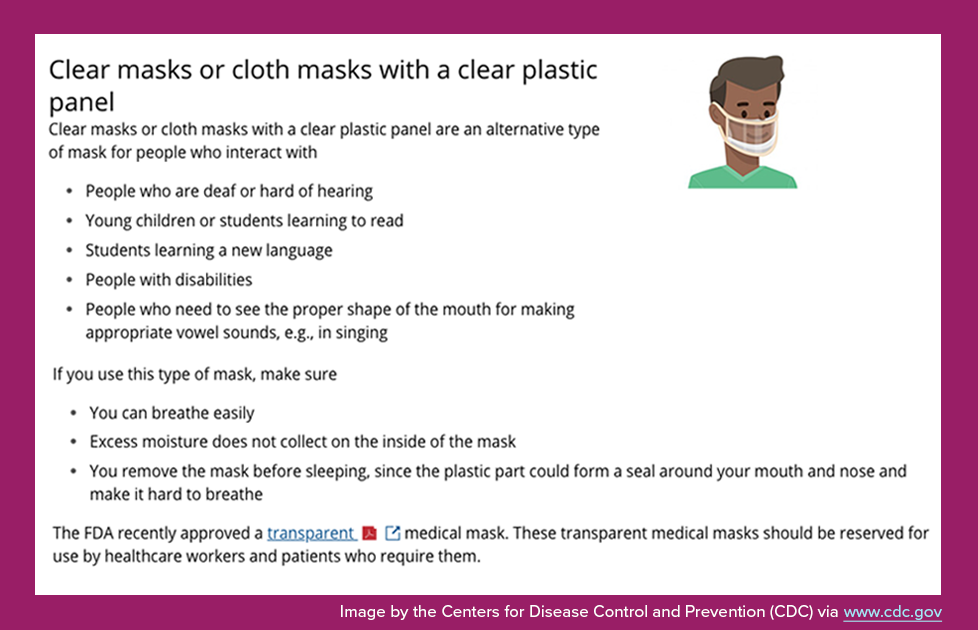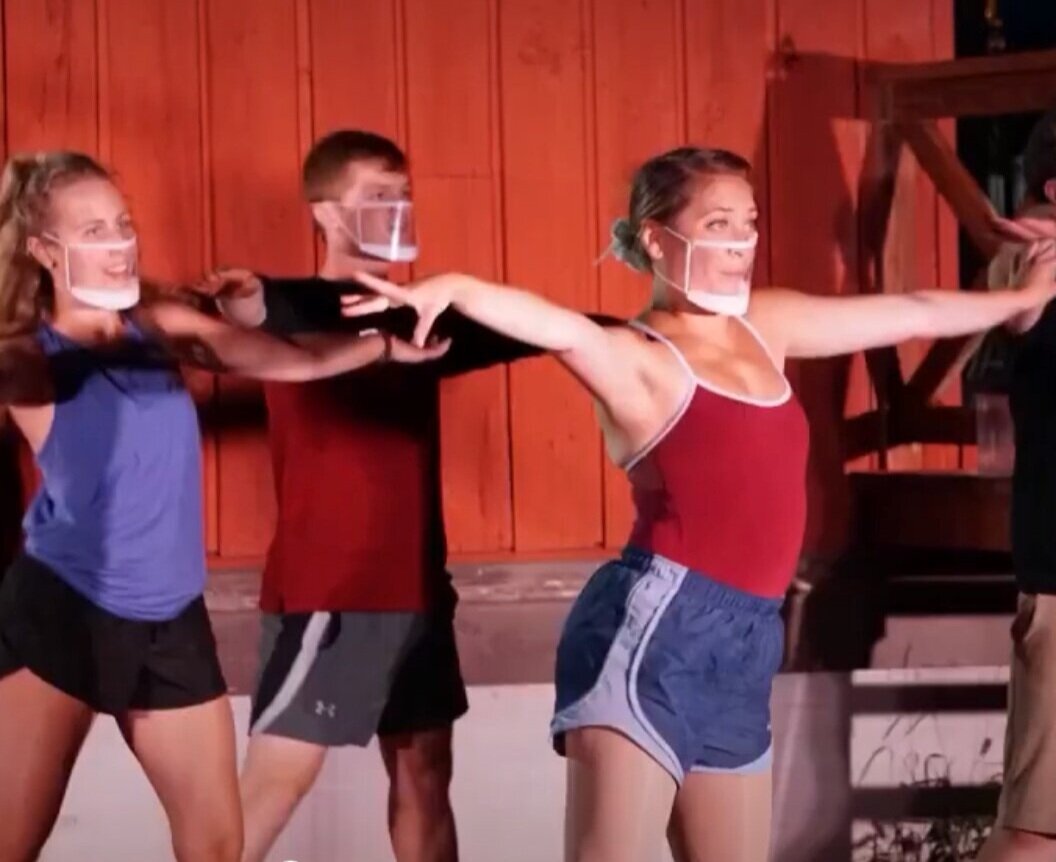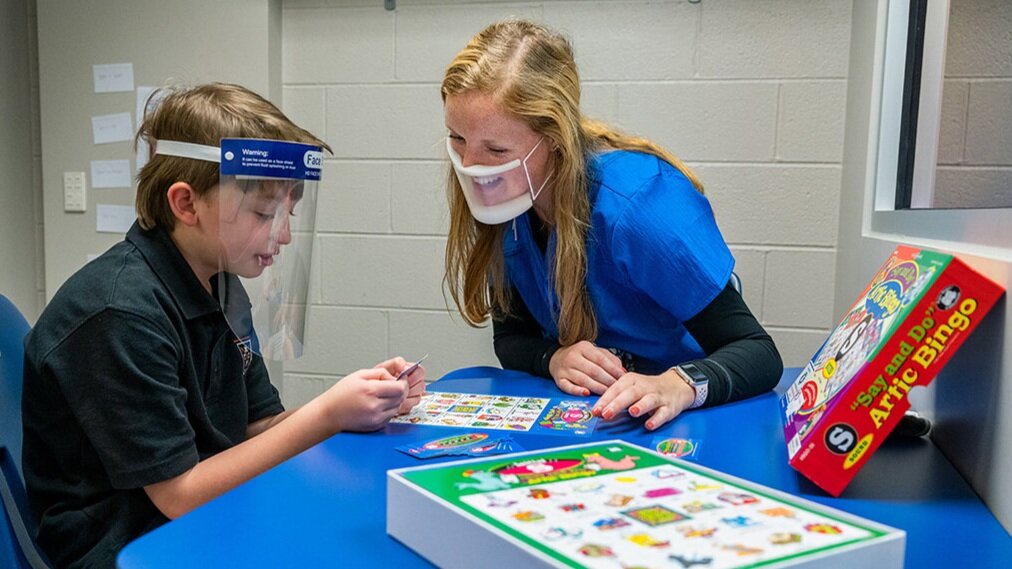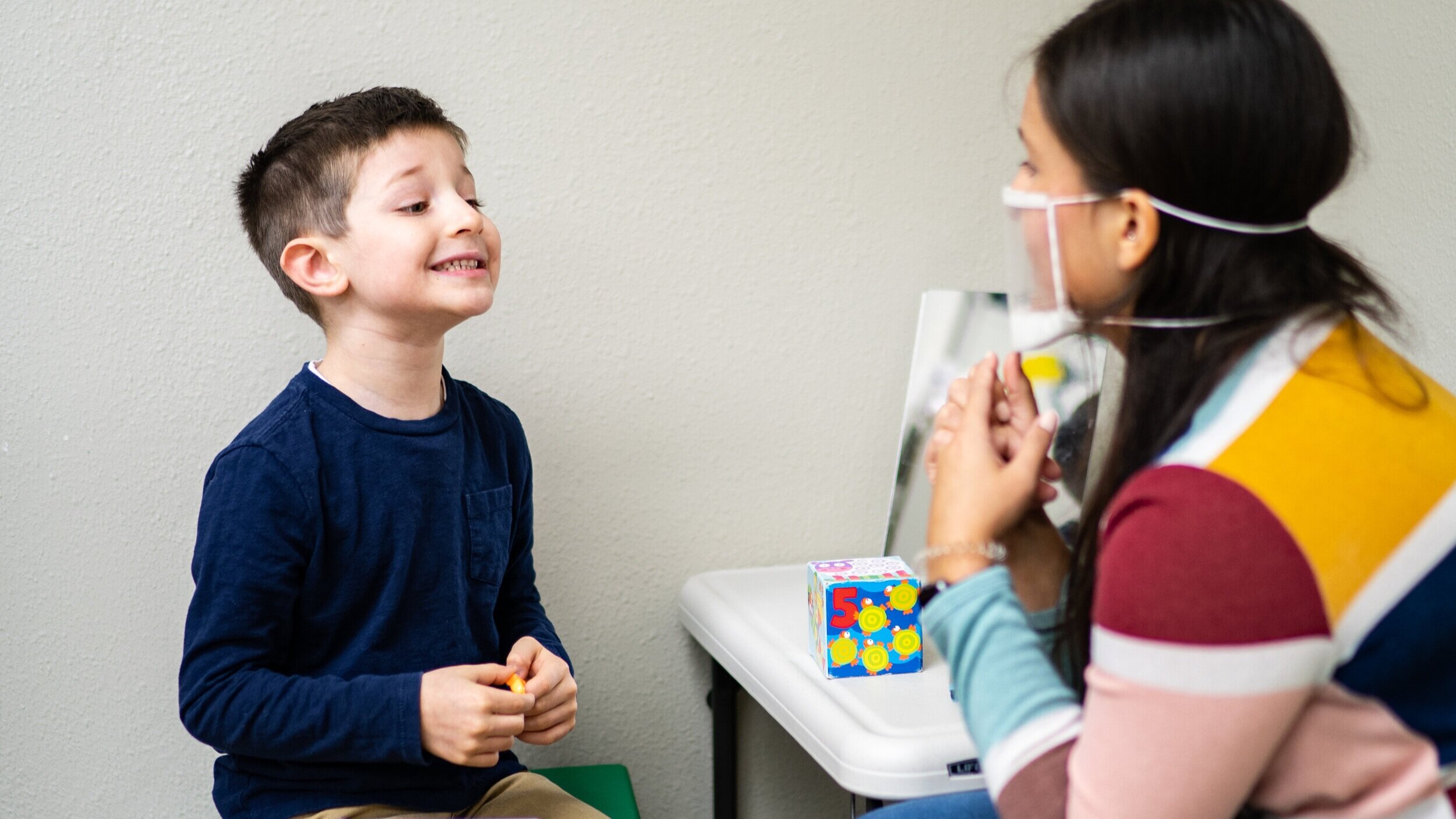Why the ClearMask™ is a must-have in every school and university
How can students and teachers stay protected without compromising communication and learning when masks are required?
The CDC has suggested the use of transparent face masks as an option for those who interact with:
People who are deaf or hard of hearing
Young children or students learning to read
Students learning a new language
People with disabilities
People who need to see the proper shape of the mouth for making appropriate vowel sounds (for example, when singing)
How do masks impact students and teachers?
Traditional face masks can limit communication and learning, blocking the ability to see facial expressions, emotions, smiles, and visual cues. In fact, over half of visual communication is blocked by standard masks, negatively affecting speech and language skills, social and emotional learning, and even early brain development. Clear communication is critical to learning, teaching, and succeeding in school.
Using fully transparent, clear face masks such as the ClearMask™ Transparent Surgical Mask can help restore communication at all levels of education, from story time in preschool to university lectures. Students, teachers, parents, and caretakers alike benefit from improved visual communication, especially among young children, those who are deaf or hard of hearing, neurodiverse individuals, and students in special education.
““This adaptation provided a sense of normalcy for the students, as well as for myself. Even with the transparent masks, I didn’t feel my class was drastically different compared to last fall.””
Transparent masks beyond the classroom
The use of the ClearMask™ Transparent Surgical Mask has been adopted beyond the classroom and onto the basketball court, stage, offices of behavioral therapists, audiologists, and speech-language pathologists, and so much more.
In the performing arts, the ClearMask™ brand enables each student to fully participate, whether they are singing in a choir or showcasing their school’s theater production, by providing full facial expressions and visual cues to convey emotion, feeling, and passion.
““We used ClearMask™ for our socially distanced play and absolutely loved the masks! Being able to have our performers be seen through masks truly helped their performance and fostered their love of theatre, the arts, and their self confidence.””
In sports - we’ve seen renowned coaches such as Nick Saban and Jim Boheim use the ClearMask™ brand to better coach their athletes and communicate. It’s a no brainer - when there’s lots going on the court or field, being able to understand every cue and direction from coaches is essential!
As many speech language professionals and audiologists know, full access to the lips and face are also critical in rehabilitative and habilitative therapy with their students. For instance, those who are deaf, hard of hearing, or apraxic need to be able to visually observe cues when working with their therapists. Traditional masks block the ability to see mouth movements and facial expressions, affecting the quality of services and treatment received.
““Cara Boester, director of clinical education-speech language pathology, said the clear masks provided by the department, which allow patients to see the student’s face, are working well. ‘The clear masks that we’ve received for the speech side have been amazing,’ she said. ‘They don’t fog up, and you can see really well.’””







